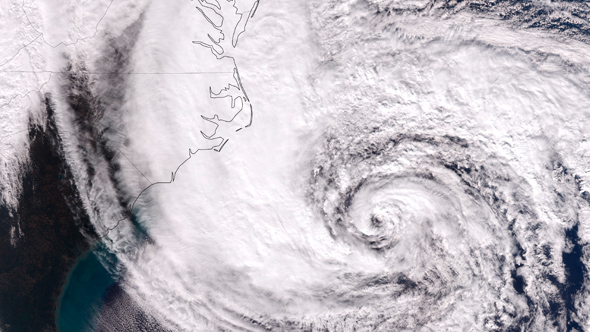
The most recent reports from the UN’s Intergovernmental Panel on Climate Change (IPCC) make use of ‘Representative Concentration Pathways’ (RCPs). These are tools to represent possible future world greenhouse gas emissions. There are four RCPs. Only the most aggressive, RCP 2.6, gives a chance of keeping global average temperature rises below the ‘dangerous’ 2°C threshold. Even under this pathway, there’s still a 1-in-3 chance temperatures may rise above 2°C.
This may all turn out to be academic. Current world emissions are tracking just above the highest of the four RCPs, RCP 8.5. This pathway leads to global warming of somewhere between 4 and 6°C by 2100. Around 1,200 new coal-fired power plants are currently planned worldwide. These facts alone make the three words ‘business-as-usual’ among the scariest in the English language.
Above 2°C, global warming starts to exhibit highly non-linear effects. In other words, each additional bit of warming generates consequences out of all proportion to the temperature change. This is largely due to a number of ‘tipping points’, which activate feedbacks that accelerate the warming. These include sea ice loss – whereby the sea absorbs more sunlight than reflective ice, so the more ice that melts, the faster the warming, and the more ice that melts.
Another feedback in the news recently is thawing permafrost. At northern high latitudes, permanently frozen soil traps greenhouse gases like methane and carbon dioxide. As the permafrost melts, the gases escape – sometimes spectacularly. The sudden appearance of large craters in Siberia – thought to be the result of explosive methane releases – is a dramatic example. The jury’s still out on the significance of the Siberian craters, but they serve as a vivid reminder of the proximity of climate tipping points.
According to author Mark Lynas, basing his analysis on the IPCC reports, 3°C of warming could lead to the total loss of the Amazon rainforest, destroying one of the Earth’s largest carbon sinks and introducing chaos into the world’s weather systems. Melting glaciers will stress the water supplies of half the world’s population, triggering mass migrations. Agricultural yields will also suffer, as grains, in particular, fail under sustained high temperatures.
Another degree, and Lynas writes that “it’s difficult to avoid the conclusion that mass starvation will be a permanent danger for much of the human race in a four-degree world”. The Sahara desert’s northward march may see it jump the Mediterranean – threatening Europe’s agriculture and displacing North African populations. At 5 degrees, Lynas suggests we may have to stop talking in terms of zones of uninhabitability, like the Sahara, and start talking about zones of habitability. This is a world unlike any humans would have seen before.
Worse still, climatologist David Archer has warned that:
“The IPCC forecast for climate change in the coming century is for a generally smooth increase in temperature, changes in rainfall, sea level, and so forth. However, actual climate changes in the past have tended to be abrupt.”
Seeing a choice between avoiding climate chaos and maintaining business-as-usual, the world’s policymakers seem to have made their choice. That leaves climate movements with a lot to do in very little time.
By Out of the Woods | @out_woods | libcom.org/outofthewoods









